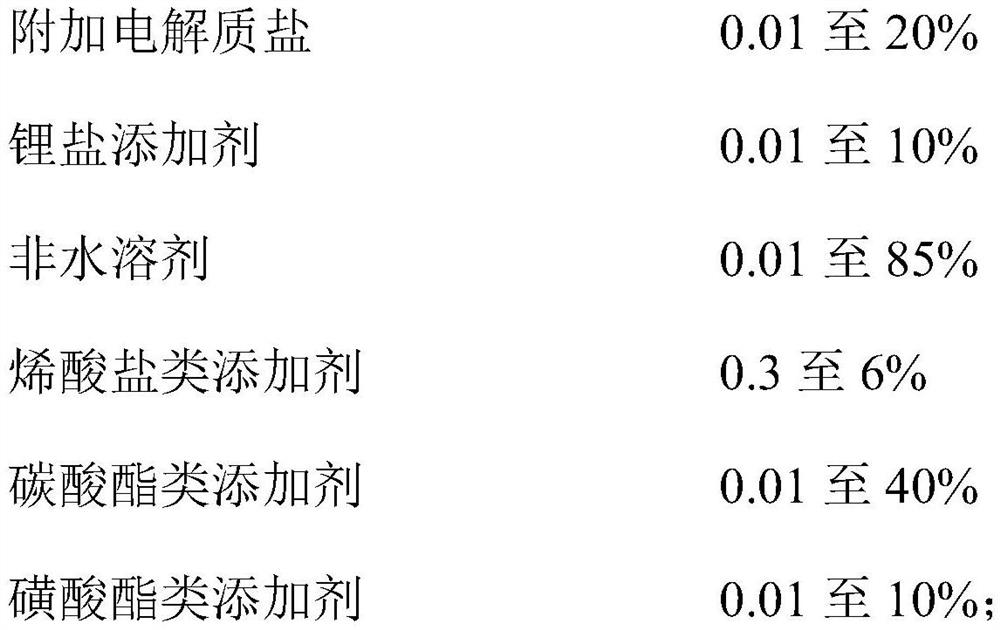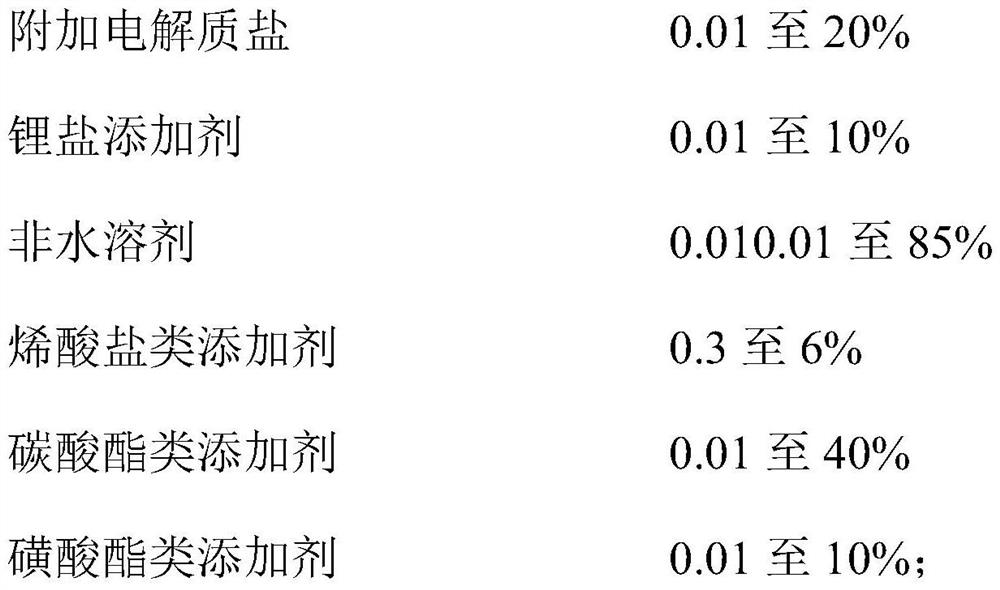Non-aqueous electrolyte for lithium battery and lithium ion battery
A non-aqueous electrolyte and lithium-ion battery technology, applied in the field of electrolyte, can solve problems that threaten battery cycle performance and high-temperature stability, increase battery impedance, and difficult export, and achieve high-temperature cycle retention and capacity recovery efficiency, lower battery impedance, and high film-forming sensitivity
- Summary
- Abstract
- Description
- Claims
- Application Information
AI Technical Summary
Problems solved by technology
Method used
Image
Examples
preparation example Construction
[0048] The preparation method of secondary lithium battery of the present invention is as follows:
[0049] (1) Preparation of non-aqueous electrolyte for lithium batteries
[0050] In a dry argon atmosphere, configure a non-aqueous solvent, add fully dried electrolyte salt, lithium salt additive, non-aqueous solvent and additives, and mix uniformly to obtain a non-aqueous electrolyte for lithium batteries.
[0051] (2) Preparation of secondary lithium battery
[0052] The electrolyte solution obtained in step 1) is used as a non-aqueous electrolyte solution for lithium batteries to prepare secondary lithium batteries.
[0053] Among them, the positive electrode material is as follows:
[0054] 811 (referred to as 8 series) means Li 2 Ni 0.8 co 0.1 mn 0.1 o 2 ;
[0055] LFP (LiFePO 4 abbreviation) means lithium iron phosphate.
[0056] The negative electrode material is graphite or carbon silicon.
Embodiment 1
[0058] The lithium battery non-aqueous electrolytic solution of the present embodiment comprises the following components by weight percentage:
[0059]
[0060] Wherein, the non-aqueous solvent is a mixture of EC, EMC and DEC with a mass ratio of 3:5:2.
[0061] Among them, the structural formula of the acrylate additive is Record it as A.
[0062] The structural formula of another enoate additive is Record it as B.
[0063] In addition, the non-aqueous solvents in Examples 2-12 and Comparative Examples 1-6 are mixtures of EC, EMC and DEC with a mass ratio of 3:5:2.
[0064] In other embodiments and comparative examples, parameters were changed on the basis of Example 1, and the parameters for specific changes are shown in Table 1.
[0065] Table 1
[0066]
[0067] The lithium batteries prepared in Examples 1-12 and Comparative Examples 1-6 were tested for performance, and the test results are shown in Table 2.
[0068] Wherein, the secondary battery of the pre...
Embodiment 12
[0082] It can be seen from Example 12 that without adding DTD, the prepared battery still has low battery impedance and excellent cycle performance.
PUM
 Login to View More
Login to View More Abstract
Description
Claims
Application Information
 Login to View More
Login to View More - R&D
- Intellectual Property
- Life Sciences
- Materials
- Tech Scout
- Unparalleled Data Quality
- Higher Quality Content
- 60% Fewer Hallucinations
Browse by: Latest US Patents, China's latest patents, Technical Efficacy Thesaurus, Application Domain, Technology Topic, Popular Technical Reports.
© 2025 PatSnap. All rights reserved.Legal|Privacy policy|Modern Slavery Act Transparency Statement|Sitemap|About US| Contact US: help@patsnap.com



